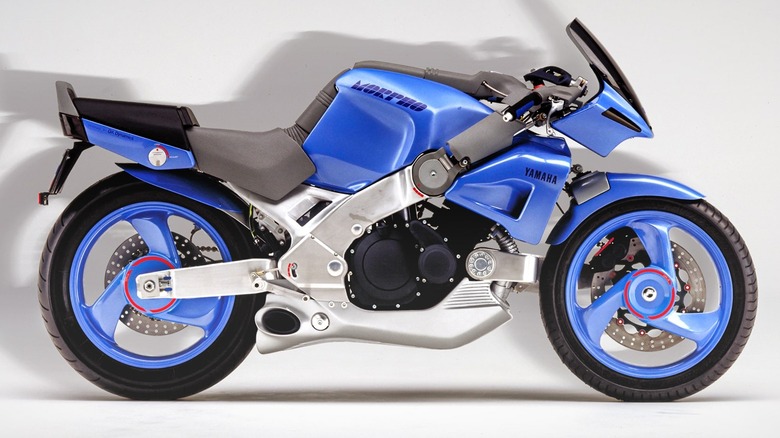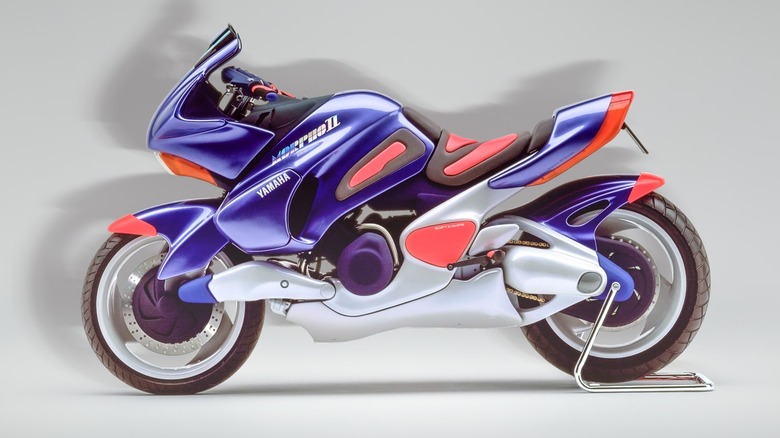Yamaha's Ill-Fated Morpho Motorcycle Concepts Were Designed To Be Ergonomic
Nowhere is the cliche "hindsight is 20/20" more applicable than in the world of business. Seemingly obvious ideas – steam power, airplanes, electric cars – had arisen in the marketplace many times, only to vanish without a trace. When those concepts finally found their feet and started changing the world, their histories left investors baffled: how did we ever miss this value in the first place?
Save a spot next to the Drachenflieger and Hero of Alexandria for Yamaha's Morpho line of motorcycles. Unveiled in 1989, Morpho motorcycles embraced '80s visuals and delivered a solid performance, but their overall design was guided by what should have been the most practical and popular idea in vehicular design: ergonomics. Morpho bikes were designed to be easy and comfortable to use (per Ride Apart). Perversely, that doomed them. It would be years before the ideas behind Morpho emerged elsewhere in the marketplace, setting the standard for superbike comfort and usability.
Too good for its own good
The Yamaha Morpho debuted at the 1989 Tokyo Motor Show. Gearheads took notice. In addition to superbike stats of 110 horsepower and a top speed of 190 miles per hour, the Morpho made major changes to some of the basics of bike design. Designer James Parker employed Rotationally Advanced Design Development, christening it with the '80s-appropriate acronym RADD, to open up new possibilities in form and function.
Fundamentally, RADD decoupled Morpho's suspension from its steering, allowing two separate axes of potential customization. The result was a ride where the handlebars, foot pegs, and even the seat could be easily altered, even by mechanically inexperienced riders. Adding that to neon flourishes in the bodywork and a low center of gravity, the Morpho seemed like a success in the making.
Instead, Yamaha never even put the bike into production — the same fate as many motorbike concepts from that era. Customer tastes had shifted and Yamaha went with them. The company took one more swing with the Morpho II in the early '90s, but customers were no more enthusiastic. In the end, the company stripped out all the Morpho's ideas in favor of implementing them in different marques and times: RADD reappeared on the GTS1000 tourer and the Morpho's quick-change rear wheel has turned up on Yamaha racing bikes (via Motorcyclist).

